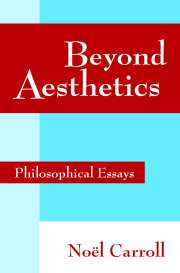Foreword by Peter Kivy
Published online by Cambridge University Press: 19 January 2010
Summary
The second half of our century has witnessed a remarkable revival of interest in philosophical speculation centering on the fine arts. Not since the flowering of German Romanticism have so many philosophers of the first rank taken aesthetics and the philosophy of art as an area of special interest.
The publication of Arthur Danto's The Transfiguration of the Commonplace, in 1981, ushered in a period in the aesthetic revival of which I speak that, at least in Anglo-American circles, has been largely dominated by Danto's philosophical presence.
The Transfiguration of the Commonplace is philosophy of art in the “grand manner”: in the universe of the arts, a “theory of everything.” I myself think it will be the last such grand speculative venture in the field for a very long time: how long a time I cannot possibly guess. But we are, in any case, entering a new period in the ongoing philosophical exploration of the fine arts. If the age of Danto was the age of the hedgehog, who knows one big thing, we are entering, now, the age of the fox, who knows a lot of little things. And the big fox on the block, at least from where I sit, looks to be Noël Carroll. If the age to come in philosophy of art and aesthetics is the age of the fox, it may very well be the age of Carroll.
I should say a word, though, about foxes. The philosophy of art has had, over the past half-century, its little foxes.
- Type
- Chapter
- Information
- Beyond AestheticsPhilosophical Essays, pp. ix - xivPublisher: Cambridge University PressPrint publication year: 2001



